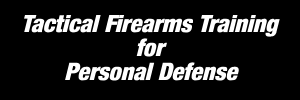Clothing
Cap or Brimmed Hat
Hearing Protection – over the ears (muff type), electronic if at all possible
Eye Protection – both clear and tinted (sunglasses and prescription eyewear OK)
Collared Shirts – (protect from hot brass), nothing too loose and to be tucked in to pants
to enable manipulation of firearm from holster. Long sleeve shirts may be preferred to protect from sun.
BDU or Cargo Type Pants – to facilitate the storage of ammunition and tools in the extra pockets
Knee Pads (and possibly elbow pads) – for kneeling and prone drills
Athletic Shoes or Boots – comfortable hiking or tactical type with good support
Sun Screen
Tactical Belt – leather gun type or tactical nylon web type
Defensive Pistol Class
Range Bag – To accommodate carrying the following equipment:
Firearm – Preferably semi-automatic, .380 caliber or larger recommended. Ultra small subcompacts are not recommended. A second or back up firearm is recommended in the event of a malfunction or breakdown that can not be quickly repaired. If the second gun is of a different caliber, bring the appropriate amount and type of ammunition.
Holster – One that is stiff and remains open when gun is deployed, without cover flaps or thumb breaks, aids in re-holstering (Kydex works well). No shoulder, cross-draw, or small-of-the-back holsters.
Magazine Pouch – Double preferred, open top, without cover flaps
Spare Magazines – A minimum of two for the gun you are using (three total), more if possible
Ammunition – At least 300 rounds of new ball/practice ammunition (no reloads). Confirm it is the correct caliber and compatible with your firearm. High Performance or Hollow Point is not needed.
